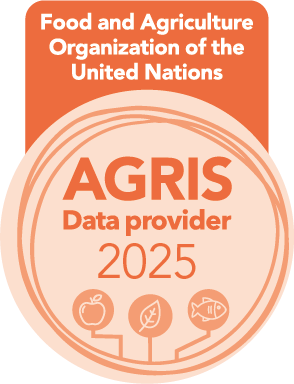Determinants of Infertility Among Married Women Visiting Public Hospitals of Lahore
Infertility among married women
DOI:
https://doi.org/10.54393/df.v2i01.41Keywords:
Infertile, Polycystic Ovary Syndrome, Pregnancy, Menstruation, ContraceptivesAbstract
Infertility can be explained as unable to get pregnant after a sensible period of time of unprotected intercourse without contraception. Objective: To find out the determinants of infertility among married women visiting public Hospitals, Lahore Methods: A cross-sectional study was conducted by visiting Public Hospitals, Lahore. 100 married women were selected through non-probability convenient sampling technique. Data was collected through pretested questionnaire. All adult married women of infertility from both indoor and outdoor department of medical and gynae units were included. The data were analyzed by SPSS version 21.0. Results: Among the participants, 22% of infertile females were between 20-26 years, 54% infertile females were between 27-32 years, 20% infertile females were between 33-38 years, 3% infertile females were between 39-44 years and 1% infertile females were above 45 years. The prevalence of infertility was high in females aged between 27-32 years. 42% were overweight, underweight were 19%, 13% were normal and obese were 26% Conclusions: Study concluded that obesity, overweight, underweight, poor eating habits, low socioeconomic status, low family income, repeated mumps, stress, smoking, work overload, polycystic ovary syndrome, use of protection to avoid pregnancy and use of contraceptive pills were the risk factors of infertility. Lack of physical activity, inadequate intake of nutrients, dysmenorrhea, stress, bathing too much, exposure to chemicals through work or lifestyle, increasing age, irregular menstrual cycle, pain or cramps during menstrual cycle were also responsible for infertility. Majority of infertile females were not consuming meat, chicken, nuts, eggs, milk, fruits in adeqate amount needed by the body for proper functioning.
References
Ali S, Sophie R, Imam AM, Khan FI, Ali SF, Shaikh A, Farid-ul-Hasnain S. Knowledge, perceptions and myths regarding infertility among selected adult population in Pakistan: a cross-sectional study. BMC Public Health. 2011 Dec;11(1):760.
Brugo-Olmedo S, Chillik C, Kopelman S. Definition and causes of infertility. Reproductive biomedicine online. 2001 Jan 1;2(1):173-85.
Sharpe RM, Franks S. Environment, lifestyle and infertility—an inter-generational issue. Nature Medicine. 2002 Oct 1;8(10s):S33.
Norman RJ, Davies MJ, Lord J, Moran LJ. The role of lifestyle modification in polycystic ovary syndrome. Trends in Endocrinology & Metabolism. 2002 Aug 1;13(6):251-7.
McQuillan J, Greil AL, White L, Jacob MC. Frustrated fertility: Infertility and psychological distress among women. Journal of Marriage and Family. 2003 Nov 1;65(4):1007-18.
Power ML, Schulkin J. Sex differences in fat storage, fat metabolism, and the health risks from obesity: possible evolutionary origins. British Journal of Nutrition. 2008 May;99(5):931-40.
Sim KA, Partridge SR, Sainsbury A. Does weight loss in overweight or obese women improve fertility treatment outcomes? A systematic review. obesity reviews. 2014 Oct 1;15(10):839-50.
Hammarberg K, Setter T, Norman RJ, Holden CA, Michelmore J, Johnson L. Knowledge about factors that influence fertility among Australians of reproductive age: a population-based survey. Fertility and Sterility. 2013 Feb 1;99(2):502-7.
Morgante G, Massaro MG, Di Sabatino A, Cappelli V, De Leo V. Therapeutic approach for metabolic disorders and infertility in women with PCOS. Gynecological Endocrinology. 2018 Jan 2;34(1):4-9
Triggianese P, Watad A, Cedola F, Perricone C, Amital H, Giambini I, Perricone R, Shoenfeld Y, De Carolis C. Vitamin D deficiency in an Italian cohort of infertile women. American Journal of Reproductive Immunology. 2017 Oct 1;78(4).
Darché RL, Ruder EH, Blumberg J, Hartman TJ, Goldman MB. Antioxidants in Reproductive Health and Fertility. InNutritional Antioxidant Therapies: Treatments and Perspectives 2017 (pp. 113-136). Springer, Cham.
La Vecchia I, Paffoni A, Castiglioni M, Ferrari S, Bortolus R, Ferraris Fusarini C, Bettinardi N, Somigliana E, Parazzini F. Folate, homocysteine and selected vitamins and minerals status in infertile women. The European Journal of Contraception & Reproductive Health Care. 2017 Jan 2;22(1):70-5.
Ruder EH, Hartman TJ, Goldman MB. Impact of oxidative stress on female fertility. Current opinion in obstetrics & gynecology. 2009 Jun;21(3):219.
Jungheim ES, Travieso JL, Hopeman MM. Weighing the impact of obesity on female reproductive function and fertility. Nutrition reviews. 2013 Oct 1;71(suppl_1):S3-8.
Luke B, Brown MB, Stern JE, Missmer SA, Fujimoto VY, Leach R, A SART Writing Group. Female obesity adversely affects assisted reproductive technology (ART) pregnancy and live birth rates. Human Reproduction. 2010 Nov 11;26(1):245-52.
Aviram A, Hod M, Yogev Y. Maternal obesity: Implications for pregnancy outcome and long-term risks–a link to maternal nutrition. International Journal of Gynecology & Obstetrics. 2011 Nov 1;115:S6-10.
Joham AE, Teede HJ, Ranasinha S, Zoungas S, Boyle J. Prevalence of infertility and use of fertility treatment in women with polycystic ovary syndrome: data from a large community-based cohort study. Journal of women's health. 2015 Apr 1;24(4):299-307.
Milone M, De Placido G, Musella M, Fernandez LM, Fernandez LV, Campana G, Di Minno MN, Milone F. Incidence of successful pregnancy after weight loss interventions in infertile women: a systematic review and meta-analysis of the literature. Obesity surgery. 2016 Feb 1;26(2):443-51.
Pasquali R, Gambineri A, Pagotto U. The impact of obesity on reproduction in women with polycystic ovary syndrome. BJOG: An International Journal of Obstetrics & Gynaecology. 2006 Oct 1;113(10):1148-59.
Maheshwari A, Hamilton M, Bhattacharya S. Effect of female age on the diagnostic categories of infertility. Human reproduction. 2008 Jan 11;23(3):538-42.
Bretherick KL, Fairbrother N, Avila L, Harbord SH, Robinson WP. Fertility and aging: do reproductive-aged Canadian women know what they need to know?. Fertility and sterility. 2010 May 1;93(7):2162-8.
Chavarro JE, Rich-Edwards JW, Rosner BA, Willett WC. A prospective study of dietary carbohydrate quantity and quality in relation to risk of ovulatory infertility. European journal of clinical nutrition. 2009 Jan;63(1):78.
Downloads
Published
How to Cite
Issue
Section
License
Copyright (c) 2021 DIET FACTOR (Journal of Nutritional & Food Sciences)

This work is licensed under a Creative Commons Attribution 4.0 International License.
This is an open-access journal and all the published articles / items are distributed under the terms of the Creative Commons Attribution License, which permits unrestricted use, distribution, and reproduction in any medium, provided the original author and source are credited. For comments












